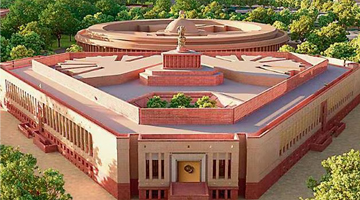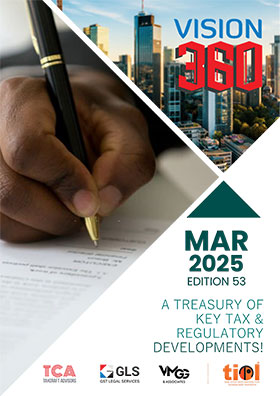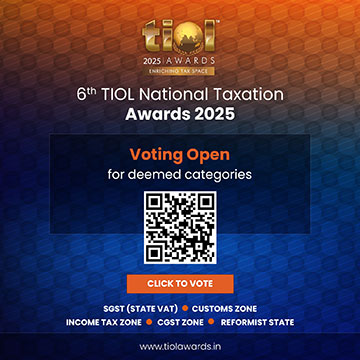ITC on Telecommunication towers
FEBRUARY 13, 2019
By Puneet Agrawal & Bharat Agarwal
 "Availability of credit in respect of inputs and input services pertaining to telecommunication towers have always been dispute centric in Service Tax Regime. The Revenue has consistently contended that "telecommunication towers" are immovable property, therefore, no credit would be available on it. The same dispute remains in the GST era as well. In our view, by virtue of the Judgment of Hon'ble Supreme Court in Solid and Correct Engineering Works - 2010-TIOL-25-SC-CX, and by virtue of recent judgment of Delhi High Court in Vodafone case - 2018-TIOL-2409-HC-DEL-ST which lay down the test of immovability in which the telecommunication towers do not fall. Thus, credit is available on telecommunication towers, and should be availed immediately."
"Availability of credit in respect of inputs and input services pertaining to telecommunication towers have always been dispute centric in Service Tax Regime. The Revenue has consistently contended that "telecommunication towers" are immovable property, therefore, no credit would be available on it. The same dispute remains in the GST era as well. In our view, by virtue of the Judgment of Hon'ble Supreme Court in Solid and Correct Engineering Works - 2010-TIOL-25-SC-CX, and by virtue of recent judgment of Delhi High Court in Vodafone case - 2018-TIOL-2409-HC-DEL-ST which lay down the test of immovability in which the telecommunication towers do not fall. Thus, credit is available on telecommunication towers, and should be availed immediately."
THE Judgment of Solid and Correct Engineering Works, laid down that when any machine is fixed by nuts and bolts to a foundation in order to provide a wobble free operation to the machine, without the intention to attach it permanently, then an attachment of this kind would not constitute permanent fixing, embedding or attachment. Thus laying down the test of permanency, the Court held that mere fastening machine to a foundation by nuts and bolts would not constitute an immovable property. The very same principal applies to telecommunication tower as well. Further, to determine whether an article is permanently fastened to anything attached to the earth requires determination of both the intention as well as the factum of fastening to anything attached to the earth.
TEST OF IMMOVABILITY
Section 3(26) of the General Clauses Act includes within the definition of the term "immovable property" things attached to the earth or permanently fastened to anything attached to the earth. Section 3 of the Transfer of Property Act, however, gives the following meaning to the expression "attached to the earth":
(a) rooted in the earth, as in the case of trees and shrubs;
(b) imbedded in the earth, as in the case of walls or buildings; or
(c) attached to what is so imbedded for the permanent beneficial enjoyment of that to which it is attached;
It is evident from the above, that the expression "attached to the earth" has three distinct dimensions viz. (a) rooted in the earth as in the case of trees and shrubs, (b) imbedded in the earth as in the case of walls or buildings, or (c) attached to what is imbedded for the permanent beneficial enjoyment of that to which it is attached. Building imbedded in the earth is permanent and cannot be detached without demolition. Imbedding of a wall in the earth is also in no way comparable to attachment of a plant to a foundation meant only to provide stability to the plant especially because the attachment is not permanent and what is attached can be easily detached from the foundation.
In the Judgment of Solid and Correct Engineering Works (supra) , it was held that the machines becoming a part and parcel of the structures in which they were fitted were no longer moveable goods. The immovable test was laid down to mean that if functionality of a property depends upon embedment and assimilation, leading to extinction of movable character, the property is immovable.
In view of the above it was held that the property in question was not an immovable property for the following reasons:
i. The plants in question are not per se immovable property.
ii. Such plants cannot be said to be "attached to the earth" within the meaning of the expression as defined in Section 3 of the Transfer of Property Act.
iii. The fixing of the plants to a foundation is meant only to give stability to the plant and keep its operation vibration free.
iv. The setting up of the plant itself is not intended to be permanent at a given place. The plant can be moved and is indeed moved after the road construction or repair project for which it is set up is completed.
It is pertinent here to state that in the case of "telecommunication towers", they are attached to earth or are set up on rooftop on any building or are mounted on vehicle. Now the structures installed on rooftop will certainly would not be called as "attached to earth" but it could be said that they are attached with buildings which are immovable property, still the test of permanence have to be satisfied. In the commercial parlance, the telecommunication towers which are installed on rental basis or given on lease, it cannot be said that they are permanent in nature . Hence, upon termination of lease, the towers would obviously be removed; therefore, they cannot be considered as "immovable property". Similarly, telecommunication towers mounted on vehicles will not be "immovable property" as they do not satisfy any of the ingredients of the definitions laid down in General Clauses Act or Transfer of Property Act.

THE IMAGES SHOWN ABOVE ARE OF TELECOMMUNICATION TOWERS FIXED ON ROOF TOP, MOUNTED ON VEHICLE AND TOWER FIXED WITH NUTS AND BOLTS ON EARTH
THE CENVAT REGIME
On perusal of the relevant provisions pertaining to past regime (i.e. under Cenvat Credit Rules, 2004) [Kindly refer Annexure I], it could be inferred that credit of input taxes on inputs as well as capital goods, for the provision of output service namely telecommunication services, shall be availed only when it is established that the integrated " Base Transceiver System "inclusive of towers and shelters are inputs or capital goods .
DELHI HIGH COURT JUDGMENT IN VODAFONE MOBILE SERVICES LTD.
The Hon'ble Delhi High Court in the case of Vodafone case (supra) conclusively stated that telecommunication towers are not immovable property. The Judgment relied upon the permanence test laid down by the Hon'ble Supreme Court in Solid and Correct Engineering (supra) .
In the judgment of Vodafone Mobile, it was observed that installation or assembly of towers and shelters is based on a rudimentary "screwdriver" technology. They can be bolted and unbolted, assembled and re-assembled, located and re-located without any damage and the fastening to the earth is only to provide stability and make them wobble and vibration free; devoid of intent to annex it to the earth permanently for the beneficial enjoyment of the land of the owner.
In the above backdrop, it was observed that the towers and shelters (which house the DG sets, AC, BTS, battery back-up etc), do not constitute immovable property. It was further held that in case BTS/ antennae is to be relocated, assessee also has to relocate the tower and pre-fabricated shelters, thereby implying that tower and pre-fabricated shelters are not immovable properties. Hence, there was no essence of permanence in the said case.
On examination of the definition and the decisions, the court observed that input credit may be availed on all the goods used for providing Output Services. It was held that the towers in CKD condition are used for the purpose of supplying the service and, therefore, would qualify as "inputs". There is actual use of the tower and shelters in conjunction with the Antenna and the BTS equipment in providing the output service, which also includes provision of the Business Support Service.
THE GST REGIME
Similarly, in the present regime, the "telecommunication towers" would be out of the ambit of "immovable property" and the restriction provided by Section 17(5)(d) of the CGST Act would not disallow the telecommunication service providers from taking Input Tax Credit. Further, Telecommunication Towers are out of the ambit of "plant and machinery" by the virtue of Explanation to Section 17. The Revenue could contend that telecommunication service providers cannot not avail Input Tax Credit as they do not come under "plant and machinery", but they also do not come under the ambit of "immovable property" which is the main restriction provided in Section 17(5)(d). The main ingredient to be satisfied for denying credit is construction of an "immovable property", which is not the case at all.
CONCLUSION
The telecommunication service providers will be able to get the benefit of the Judgments of Solid and Correct Engineering (supra) and Vodafone Mobile Services Ltd. (supra) and thus be eligible to avail the benefit of Input Tax Credit of GST paid on telecommunication towers.
However, since the issue is still pending before Hon'ble Supreme Court for final verdict, we would suggest that in view of above direct judgment of Hon'ble Delhi High Court, the assessees should weigh in the pros and cons and consider availing ITC especially because GST law has time limitations for availment of ITC.
(The authors are Partner and Sr. Associate ALA Legal, Advocates & Solicitors respectively. The views expressed are strictly personal.)
| (DISCLAIMER : The views expressed are strictly of the author and Taxindiaonline.com doesn't necessarily subscribe to the same. Taxindiaonline.com Pvt. Ltd. is not responsible or liable for any loss or damage caused to anyone due to any interpretation, error, omission in the articles being hosted on the site) |









 "Availability of credit in respect of inputs and input services pertaining to telecommunication towers have always been dispute centric in Service Tax Regime. The Revenue has consistently contended that "telecommunication towers" are immovable property, therefore, no credit would be available on it. The same dispute remains in the GST era as well. In our view, by virtue of the Judgment of Hon'ble Supreme Court in Solid and Correct Engineering Works -
"Availability of credit in respect of inputs and input services pertaining to telecommunication towers have always been dispute centric in Service Tax Regime. The Revenue has consistently contended that "telecommunication towers" are immovable property, therefore, no credit would be available on it. The same dispute remains in the GST era as well. In our view, by virtue of the Judgment of Hon'ble Supreme Court in Solid and Correct Engineering Works - 






